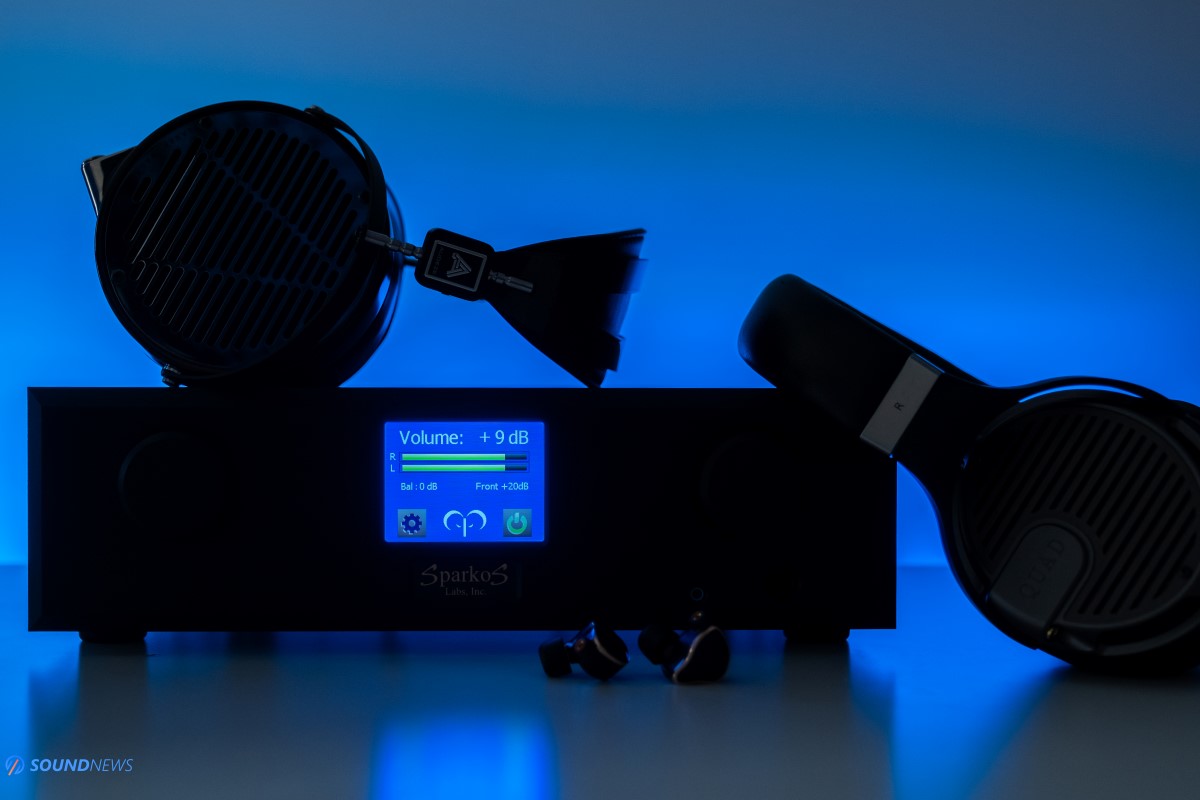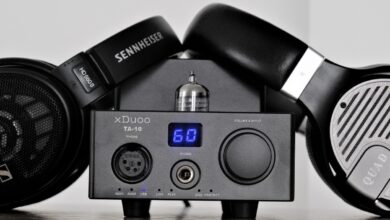SparkoS Labs Aries Review – Shooting for the stars!
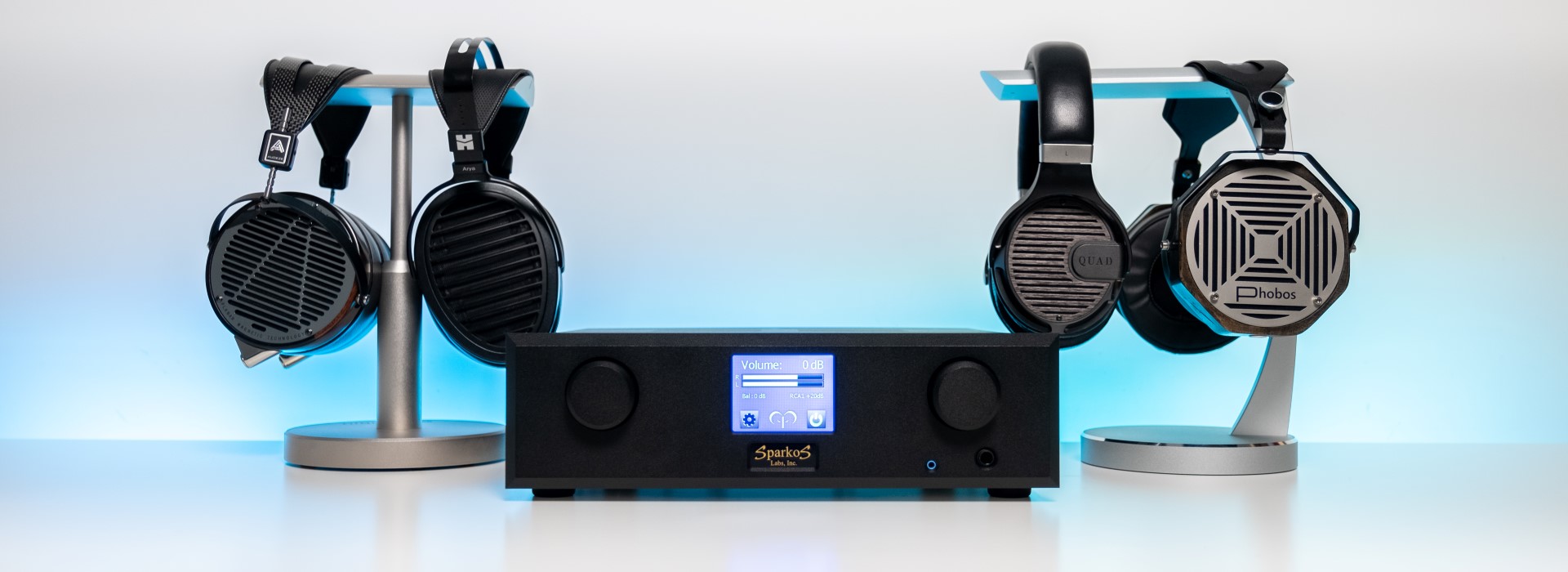
My Video Review:
When you think you know them all, as if you listened to the best solid-state headphone amplifiers on this planet, a little doggie called Lutz would come and tell you that you know nothing young padawan.
As a detour from my intro, about one year and half ago, one of my friends decided to finally purchase his first DAC and headphone amp combo, it was the basic version of Burson Play. He loved that one, but curiosity struck fast and hard, as later he was already asking what op-amps should he change for a better sound. That unit used three NE5532 dual op-amps and another two NE5534 single op-amps. It was obvious I recommended the V6 Vivid and Classic op-amps from Burson that would double the price of the unit, but what the heck, it didn’t matter to him, he purchased those and was happy for the immediate change in sound quality. Much later, he contacted me again, telling that he discovered an American company called SparkoS Labs from which he purchased some discrete single and dual op-amps to try in his Play. He was so enthusiastic over the phone telling me that SparkoS op-amps sounded better in the Play compared to the Burson discrete offering. He mentioned a clearer and a faster sound compared to the Burson own V6 discrete op-amps. At that moment a seed of curiosity was already planted in me and it was only a matter of time when a SparkoS device or op-amp would land on my table.
Time passed, SparkoS Labs CEO Lutz decided to step up their game and prove everyone that they can make a finished product and decided going for a top-of-the-line headphone amplifier that could challenge the best there is. So, with the help Andrew Sparks as the engineering head and with the help of Alisa Jones – the mastermind behind all things, Lutz was ready to conquer the hearts of headphone enthusiasts all over the world.
All jokes aside, as you all know, I am crazy headphone aficionado and I will never stop until the walls of my office will be populated by tens of high-performance headphones. I am always on the hunt for the next best thing and being curious by nature I want to try them all, I don’t mean only headphones but headphone amps as well.
I hold the Benchmark HPA4 at the top of the mountain as the best solid-state amplifier I’ve tried. With all that said, Andrew Sparks casually told me that he would love to hear my opinion on Aries and even asked if a comparison with HPA4 would be possible. It shows how much confidence Andrew has in its own design and how proud he is about it. How could I say no to such an opportunity? Aries has few things in common with HPA4 and a lot of things are completely different, to say that I was hooked on hearing it would be a big understatement.
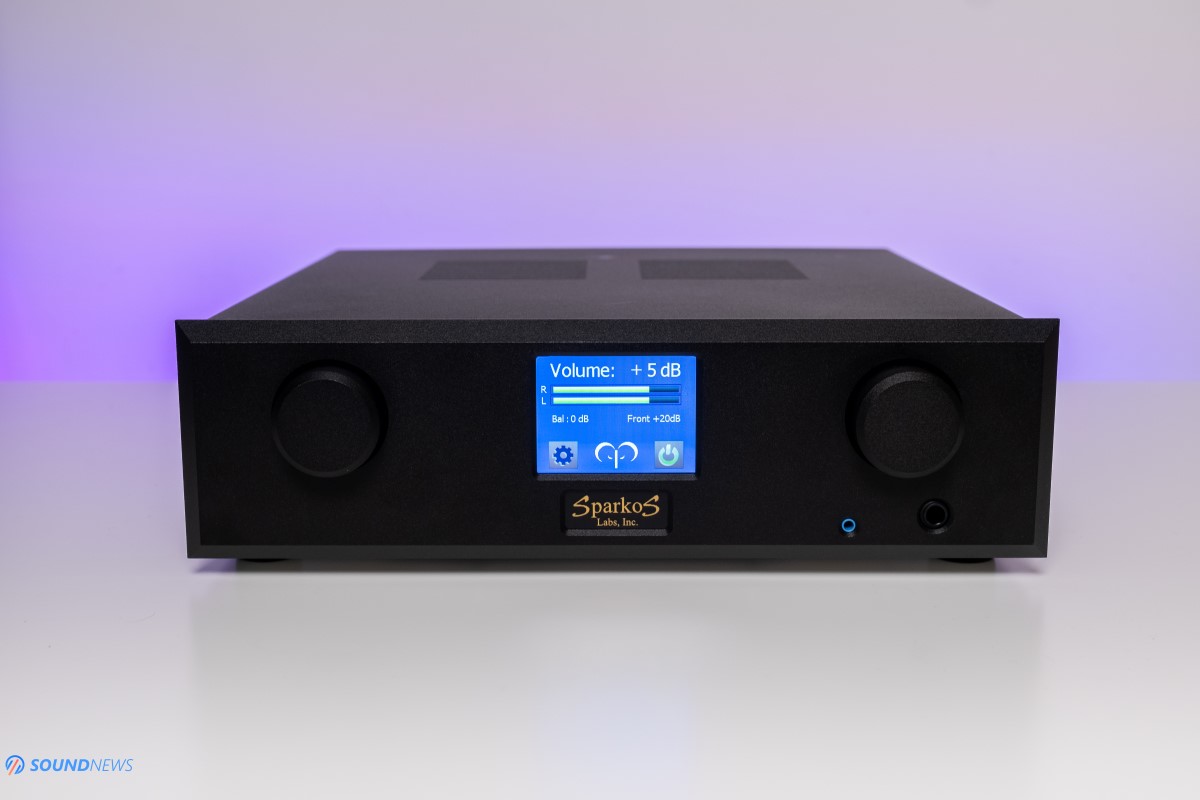
We prepared some questions for SparkoS Labs team regarding Aries, some of the answer are quite eye openers, I’m sure you’ll find them interesting, let’s check them out.
Soundnews Q1: Why a headphone amplifier? Why not an integrated, a preamp or a power amp? Are you a headphone nut as we are?
SparkoS Labs: Yes, we love us some headphone listening. With headphones, everything to do with room acoustics are rendered a non-issue which allows headphones to deliver some of the best sound of any system. Plus, you can jam out at high volume without pissing off neighbors and spouses. Part of the decision to do a headphone amp was business related too. We originally looked into doing a phono amp (which we may resurrect someday) but business wise the headphone amplifier made more sense. They are much easier to exhibit at audio shows and things like that.
Q2: It is clear that Aries targets the ones that are looking only for the best headphone amps out there. Is there a reason you didn’t feel making it a true balanced amplifier with a 4-pin XLR jack on the face plate?
SparkoS Labs: Yes. The design is single ended, so we didn’t want to mislead anyone by putting an XLR output jack which may give the impression that it was balanced when it isn’t. Balanced designs are good when the power supply voltage is limited (such as in car audio) but this was not the case in the Aries since its powered from the AC line. Balanced designs also have 3dB more noise and require 4 amplifiers (two per channel) which would increase costs.
Q3: Can you share a bit of information on how you made Aries so good at dissipating heat? It is barely warm (which we really like) after a long listening session.
SparkoS Labs: Yes, that was not easy 😊 The biggest heat concern that we faced was that the raw supply is up around 25V – and we needed a few hundred milliamps at 3.3V to run the display and microcontroller, and a few hundred more at 12V for the relays. Regulating 25V down to 12V and 3.3V at a few hundred mA each would burn a lot of heat if accomplished with linear regulators, it would add a bunch of noise if it were done with switching regulators, and it would add a bunch of size, weight, and cost and magnetic fields if it were done by adding a second, lower voltage transformer. None of these options looked good to us.
So, we invented a circuit that could be called a “gated rectifier” or perhaps an “inductorless BUK” regulator where we only charge the low voltage power supply capacitors when the incoming AC is far below the peak. It fires on the AC upswing, turns off around the peak, and fires again on the down swing of the incoming AC. The heat generated is very low since it avoids the higher voltage portion of the incoming power, and it also has the happy side effects of doubling the ripple frequency and reducing the peak current draw from the transformer (and in turn, reducing its magnetic fields) by spreading the current draw out over time and moving a good portion of it away from the peaks.
Q4: I encounter daily “me too” products in digital or analog audio world. Aries seems like a very different product compared to others. Was it born out of ambition, out of curiosity or was it something else?
SparkoS Labs: Yeah, the “me too” approach is not who we are or what we are about. We wanted the Aries to be different and stand out in all regards – in sound, in looks, its architecture and with the user interface.
Q5: The amp section of Aries is based on your SS2590 PRO discrete op-amps and not on your “normal” DIP-8 SS3602 or SS3601, is there a reason for that? Is SS2590 a better and a higher performance op-amp compared to your DIP-8 offerings?
SparkoS Labs: The SS2590 is a better device than the SS360X series, but the main reason we chose it for the audio path is because it can deliver far more current than the SS360X can. This high current delivery is required for driving headphones, and also required in the input stage to drive the stepped attenuator volume control. In order to achieve low noise, the volume control is very low impedance. The low impedance requires more driving current than the SS360X can deliver in class A mode. The SS360X devices are still used in the Aries to drive the preamp outputs as the current required to drive them are within the SS360X class A drive capability.
Q6: We really like the touch-screen of Aries, it’s an amazing feature! However, there are few things that we would change, like the Background and Foreground settings should be a bit more user friendly. A digital or an analog like VU meter would be cool too when playing some tunes. Any chance of updating the user interface of Aries in the future?
SparkoS Labs: Well, while having a VU meter would be pretty cool, it would require the microcontroller to be running at full speed all of the time to measure the audio and update the display in real time. The problem with that is that the microcontroller generates more noise when running full speed. When the unit is idly playing music, we sleep the microcontroller to eliminate its noise contribution. Having a VU meter would not allow for that. We will likely add some color presets in the next software revision to make that a bit easier and still allow for the RGB sliders to enable custom colors.
Q7: Are there any plans of releasing other desktop products? Can we have a hint? Pretty please.
SparkoS Labs: Well, nothing is planned or in the pipeline right now, but when we do get to that point – the first thing we would likely look at is resurrecting the phono amplifier that we started developing a few years ago but later abandoned.
Soundnews (End Words): We wish you good luck with your future projects and we can’t wait to see some other unique products from you!
SparkoS Labs: Thanks! And thanks for reviewing the unit 😊
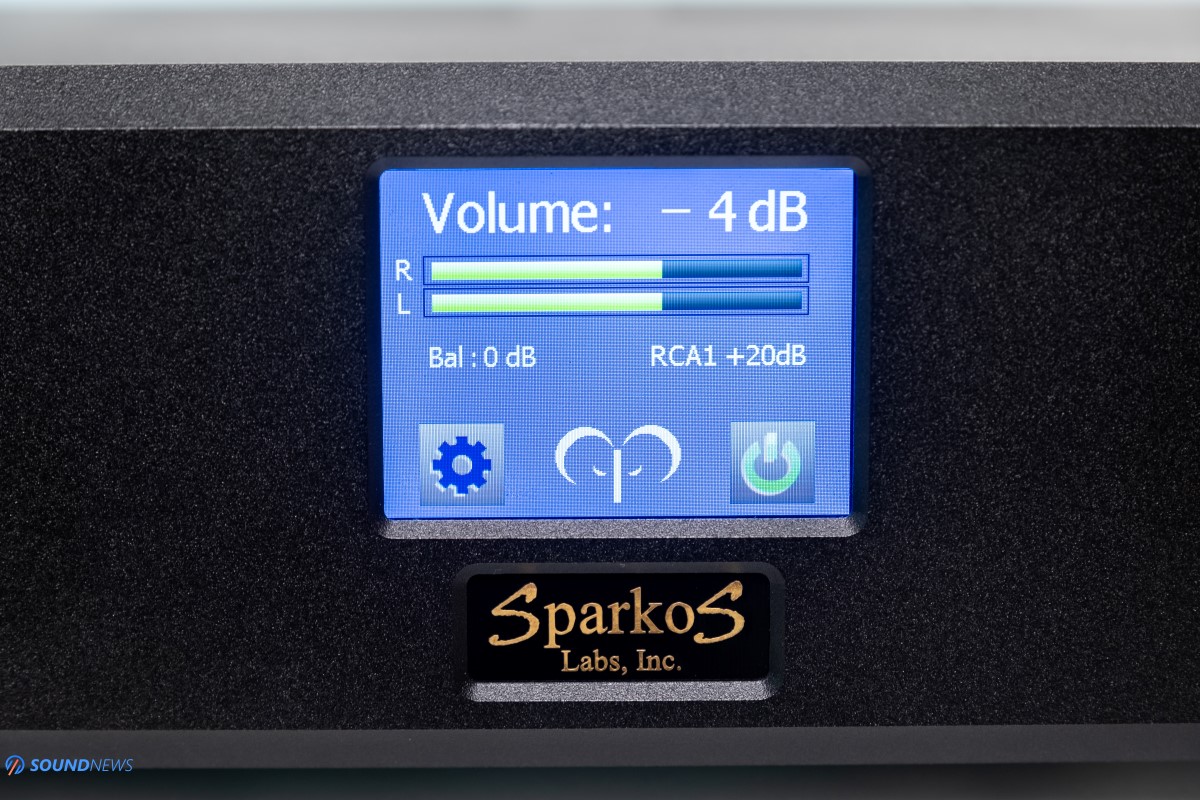
Unboxing a Beast
Aries came in a much bigger box than what I would normally expect out of a simple amplifier. Except that Aries is not really an ordinary headphone amplifier, it is much more than that. It came well protected from the outside world, covered with air bubbles and with a lot of soft foam. After seeing it in person, I can definitely say that it looks much bigger than the official photos might suggest. It is really huge and quite heavy; it already injected a thought of what should I expect from it.
Inside the box, you will find a power cable and that’s it, but sincerely at this level a third-party cable would do it proper justice. There is one thing that I wish it would have in the package and that is a remote control, especially if you go for the pimped-out version with pre-amp functionality, for that one – a remote should be a must. It comes however with a warning sign that you should check and ensure proper AC voltage before powering it on, it all makes sense. Aries uses a universal 115 V to 230 V AC power supply, but you should manually select for a 115V or for a 230V input. Sir Lüdendorf Geekenstein esquire the third, Andrew and Alisa are also thanking you for making a purchase and are providing an email address where they can help with any question you might have.
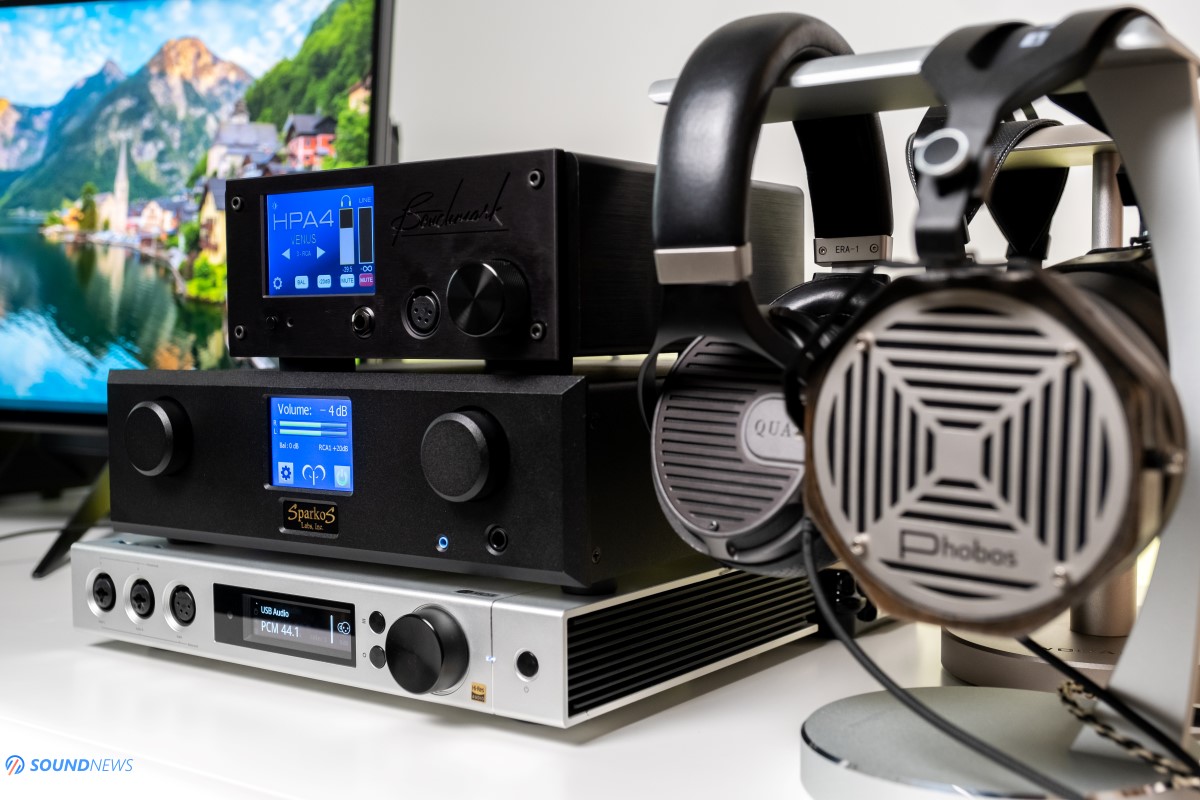
Design & Build Quality
As I told you before, Aries looks impressively huge on my table, it is bigger than most headphone amps I have tested around here and sends a whole lot of confidence just looking at it. It comes back in black only, with a really nice texture which I’ve rarely seen in the Hi-Fi world. The surface has a bigger grain to it that will resist accidental scratches or maybe even lite drops.
To me it looks elegant and straight to the point. I also like the symmetrical look of the face plate with those two wheels on both sides with a big OLED screen in the middle. About those, you can reconfigure which one will be your volume wheel and your balance controls. It is really neat having a balance control, I know two persons that have their hearing affected in one ear, so for people like that Aries is a trouble solver.
That OLED screen in the middle is actually a touch screen, you can power the device on only by pressing the touch screen in the lower right corner. By default, it will show the selected gain, balance control, the volume level and the selected input.
Once you press the settings button you can select 3 inputs (or 4 inputs in the Full version), two RCAs on the back and the 3.5mm (1/8”) jack on the front panel. You can swap the controls of both wheels, change the gain, change some display setting as brightness, background and foreground color and restore it to the factory settings. In this regard it reminds me a lot about Benchmark HPA4 which has the same type of touch screen from which all its settings can be accessed.
It has a single headphone output on the front, a 6.35 mm (1/4”) jack, suggesting that Aries is a single ended amplifier from input to output.
Before checking its back plate, you should know that there are two versions of Aries: a Base model, that is a headphone amp only and does not have balanced inputs and balanced preamp outputs on the back, this one goes for $2500. The Full version is having all that and can work as a single ended or as a balanced preamp too, the Full version will cost you $500 more.
I am testing the Base model, so those XLR inputs and outputs are covered and we are left with 2 pairs or RCA inputs, with an AC socket and with a 115V/230 V selector.
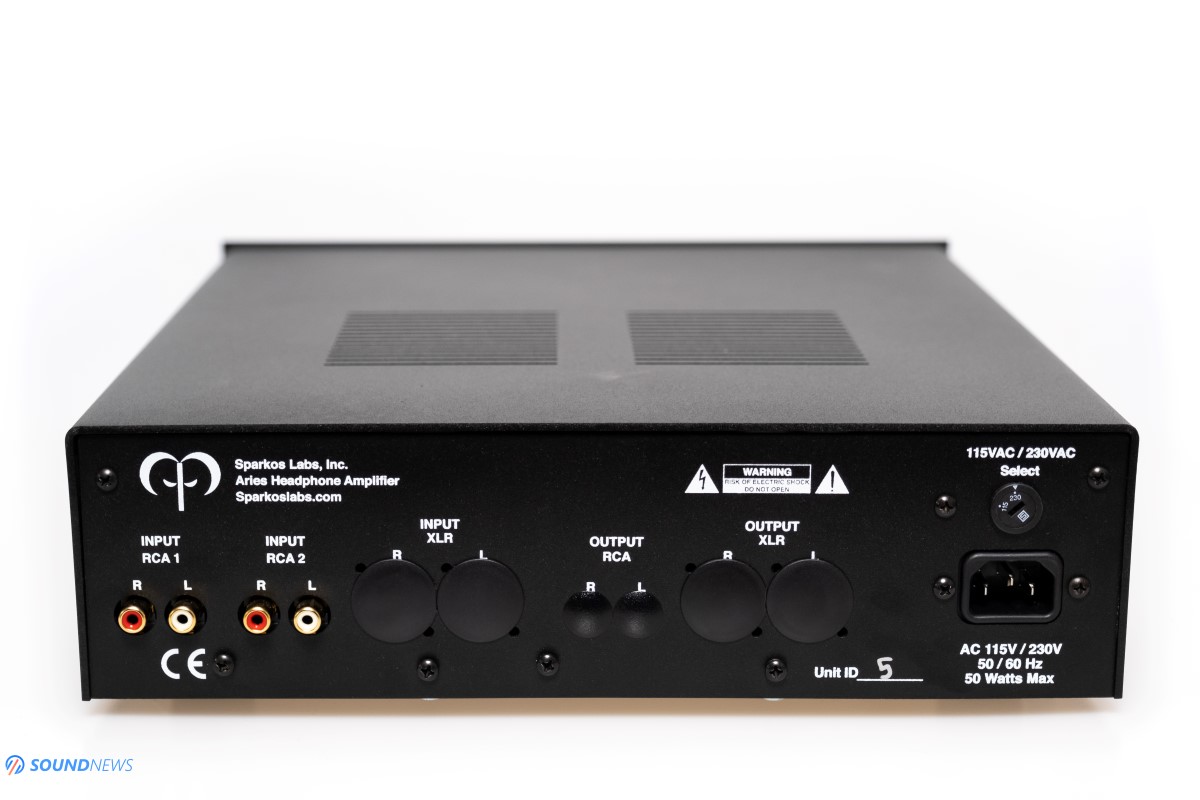
Tech inside the Aries
Now, this is where it gets super interesting. SparkoS Labs developed two types of discrete op-amps, DIP-8 op-amps coming in single or dual flavors and they also made a complete no-compromise all discrete op-amp, the one to rule them all. I’m about their SS2590 PRO discrete op-amp which is much bigger in size and if you want to use them in DIP-8 sockets in your DIY project, you will need to buy separately a PRO to DIP-8 adapter which SparkoS Labs are providing here. If you are really geeky about specs as I am, you can check the impressive specs of SS2590 PRO right here.
You can say that at the heart of Aries, four SS2590 PRO discrete op-amps will work as input and output stages for the main amplifier circuit. If you go for the Full version, beside the PRO op-amps, their SS3601 single and SS3602 dual discrete op-amps will handle the XLR input and will drive the preamp outputs, since we have the Base version, these op-amps are missing in our test unit.
It is important to know that there is not a single capacitor in the signal path and potential DC offsets are handled by a DC servo.
Aries is using a high-quality toroidal transformer shielded with Mu Metal for extremely low magnetic field pick up and hum. The power supply is also regulated by a pair of high-end SparkoS discrete voltage regulators, you can learn more about them by following this link. The micro-controller that controls the attenuator and runs the touch screen display will go into sleep mode when the unit is idly playing music to further reduce noise.
Another great feature of Aries is that it uses a reed relay switched stepped attenuator. This attenuator has 64 steps, 1dB per step. The resistors inside the attenuator are all high-precision 0.1% tolerance thin film resistors. In short terms, at any gain and at any volume position, this stepped volume control will provide a perfect volume matching between the left and the right channel, which will outperform every analog attenuator on the market not only in terms of volume matching but also in terms of noise.
There isn’t a single part in the analog circuitry where I would spot a compromise, I see only a high-performance stepped attenuator, I see best in class voltage regulators and probably the best discrete op-amps ever created.
SparkoS Labs ensured that it has 1.6uV of RMS noise at 0 dB gain (almost maxed out), that is the lowest noise I ever seen mentioned before, even the mighty Benchmark HPA4 has it at 1.9 uV at unity gain of 0 dB! If you want it in dB instead of uV, then that is about -130 dB of noise at close to maximum volume. You will need to blow out your eardrums at 131 dB to hear just 1dB of noise, that is absolutely incredible in my book!

Test Equipment
To hear the Aries at its maximum potential, I’ve felt that some high-end sources will be needed. This is why Aries was tested with 2 different sources to have a better feel about its sound. My test equipment resumed at Matrix Audio Element X and Denafrips Venus as TOTL DACs. As for headphones, I’ve tested it with super sensitive IEMs, with portable dynamics and with four planar magnetic headphones from which Audeze LCD-4, Hifiman Arya and Erzetich Phobos will squeeze the best it can provide.
OK everyone, time to hit some ear-drums!

Sound Quality
Since, I know my Element X a lot better than the Venus and LCD-4 is currently my favorite headphone, I connected them both to Aries and had a longer listening session after an agonizing 2 weeks of non-stop burn-in.
I. Tonality & Timbre
It was quite difficult picking up the tonality of Aries, because the creator itself wanted to make it dead silent and as clean as possible without staying in front of the music signal. After hearing affordable amps for the past month, switching to Aries felt like opening wide the windows towards music, releasing unprecedented levels of transparency in the process. The first feeling I’ve got is that it sounds completely unrestrained and effortless. The background noise is the blackest I encountered, even with the most sensitive IEMs going at full power of 0 dB! Yes my friends, it sounds as detailed, as clean and as linear as the Benchmark HPA4. When you are listening to any op-amp based amplifier, sometimes you get the feeling that there are bumps down the road, that speed is decreasing somehow and the ultimate thump and slam is carrying much less impact and overall enjoyment factor is heavily affected. By comparison, Aries sounds like throwing Molotov cocktails directly into my eardrums, igniting some fiery dynamics followed by some neck bending head-bangs and arms going wild in the air. In terms of sonics, Aries is the real deal and has them all.
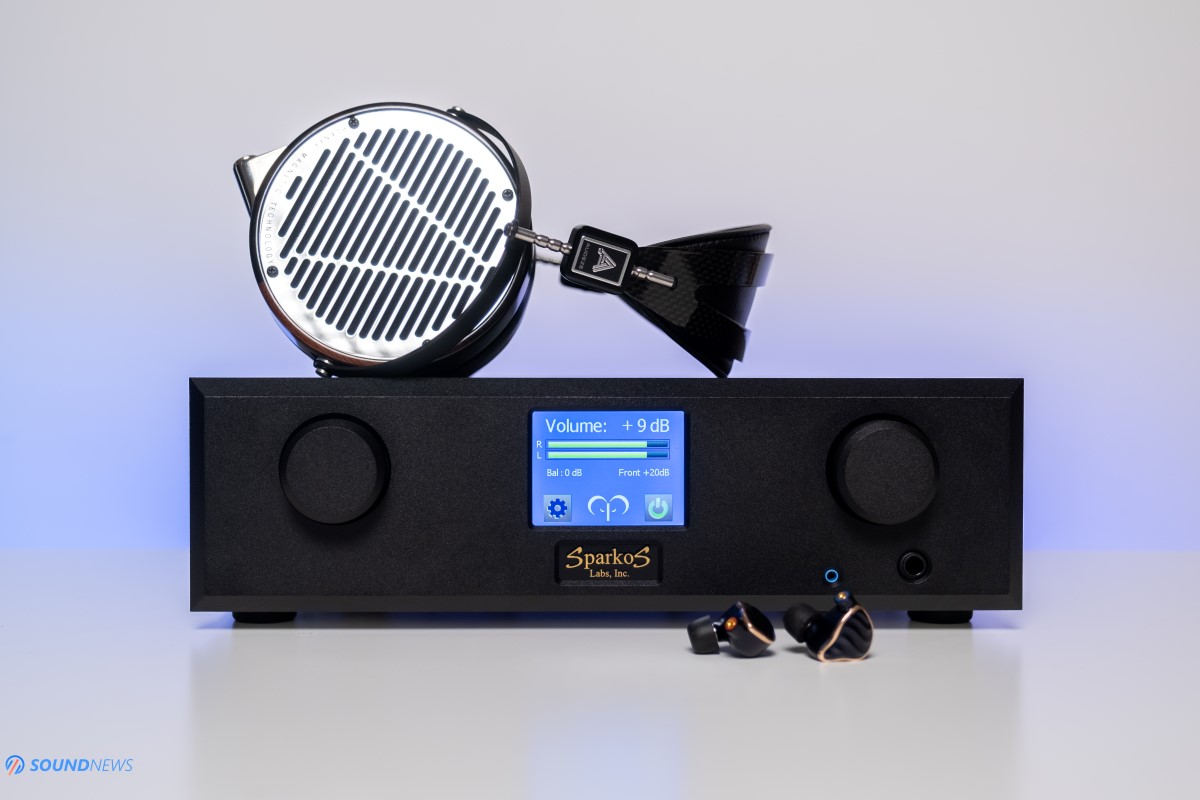
II. Background Noise / Noise Floor
I will start with the absolute best parts. Andrew was not joking around about that -130 dB of noise. The most sensitive IEMs I have in terms of noise are FiiO FH7. With an impedance of just 16 Ohms and with a huge sensitivity of 111 dB per 1 mW of power, these will pick up even dog whistles in your tunes.
Any gain I would engage, up to unity gain of 0 dB, there is an absolute silence across all my tunes, background is as black as it can be. To this day, only a single amplifier could do the same and that was the Benchmark HPA4. There were a lot of amps that had a clean background with just tiny amounts of noise, but when talking about a dead silent performance, Aries and HPA4 are The Ones to rule them All.
Thanks to that impressive stepped attenuator, listening to IEMs on the low gain is a real pleasure. First of all, low level listening works impressively due to perfect channel balance and to the fact that volume doesn’t rise way too fast, so I have plenty of volume to play with. Want a single amplifier that could perfectly work from IEMs to heavy duty planars with a complete silence between passages? Then Aries should be the perfect candidate for that.
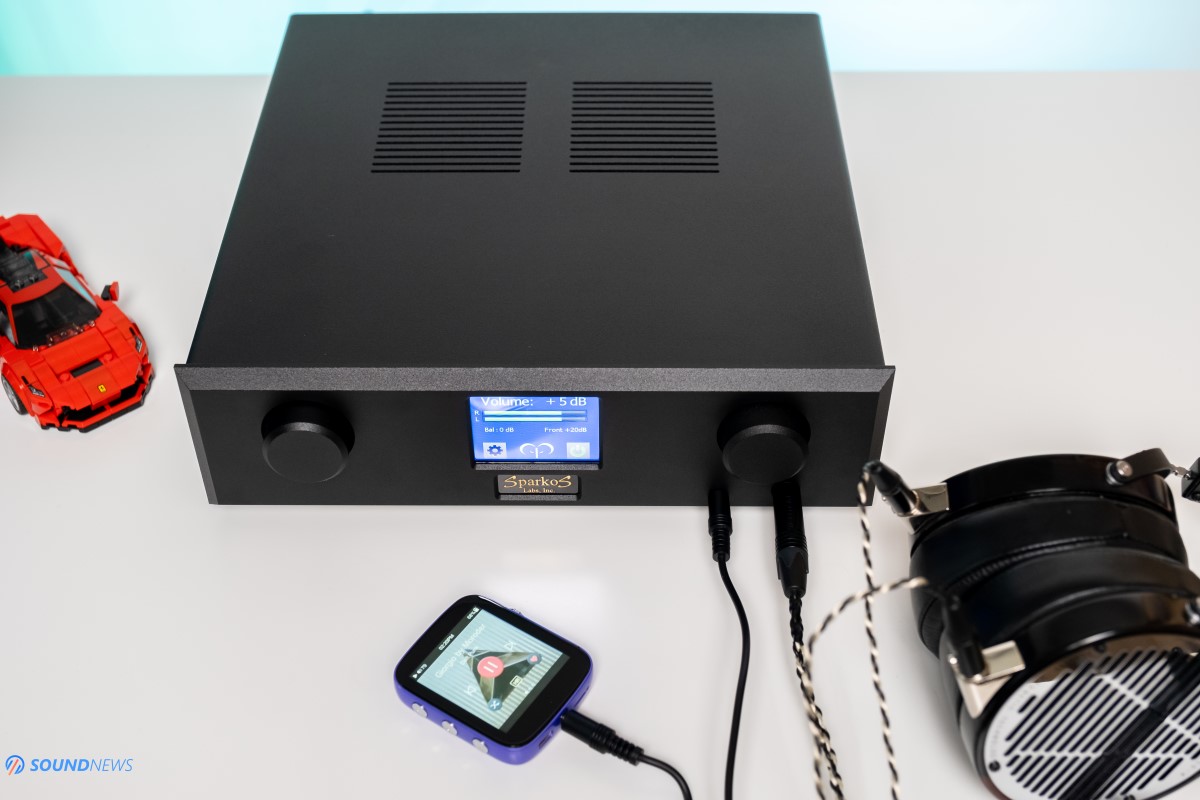
III. Resolution & Transparency
The good thing when you lower that noise floor to such bottomless pits as -130 dB, the micro-details can’t hide anymore and could be picked up easily like berries from a branch. Aries plays with the best there are when it comes to resolution and transparency. I no longer giggle when I am hearing a hidden note, or maybe an imperfection or a mastering error, because living with HPA4 for almost a year made me expect those, I am no longer searching for them, they come towards me by themselves.
While listening to any kind of reference recordings, Aries will not just show everything there is, but will highlight an additional layer that maybe the mixing console recorded by couldn’t play it back. Yes, I’ve heard people inhaling and exhaling air so vividly clear on Vivaldi – The Four Seasons (Chesky Records, 1993), I’ve heard them moving their feet in the auditorium too. On RATM – Bulls On Parade (Evil Empire, 1996) I’ve clearly heard how Tom is pressing that pedal of its guitar amp. I’ve heard thumbs rubbing against guitar strings and voice chords vibrating naturally on Louis Capart & Duo Balance – Au Large Du Gueveur (Héritage Sénan, 2001). If there are some hidden notes in your tunes, Aries will find them all and push them towards the listener.
The interesting part? When you hear so much information, you kind of expect some drawbacks like some dryness in the midrange or maybe some brightness in the treble, but that never happened with Aries with any headphone I would listen to. A truly transparent, super resolute, effortless and natural sounding amplifier. Can you really ask for more?
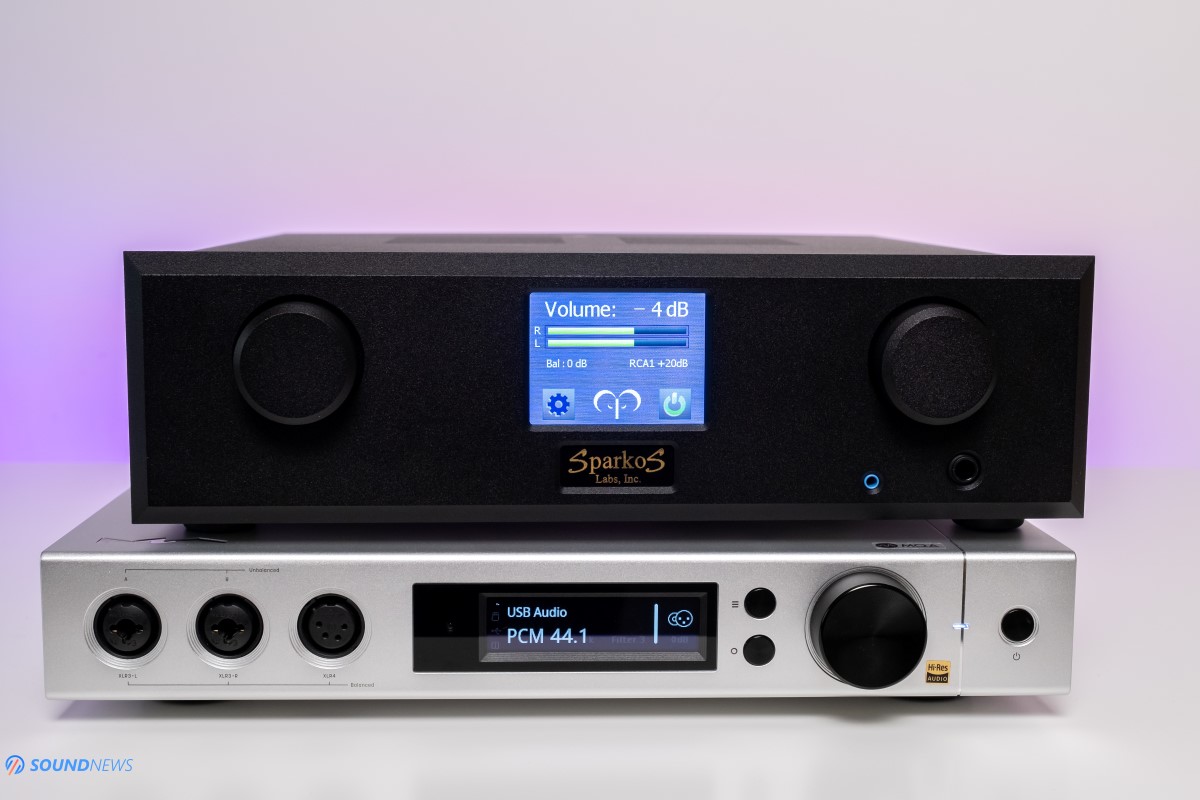
IV. Transient Response
With background noise completely out of the picture, with a senior level of transparency and with a huge damping factor thanks to those PRO discrete op-amps, you can be sure that Aries knows how to throw some punches! With the right music and with the right headphone, Aries will just grab you and pound the floor with you with an incredible slam, with a high amount of energy, speed and impact. Aries is one of those lightning fast amps that sometimes make you turn your head searching for a musical note that just disappeared in an instant. Spectral decay is obviously super-fast, I even went as far as measuring the spectral decay and THD of some of my headphones with Aries versus Benchmark HPA4 to strengthen my findings. If you crave about speed, punch and tremendous slam, Aries is right up your alley.
Here’s the funny thing: Aries can also be a gentle giant with the right source. When I connected it to Denafrips Venus and after engaging the NOS (Non-Oversampling) mode, Aries transformed itself to unrecognizable. From fast and aggressive, it became smooth, gentle and easy going. Denafrips Venus and Matrix Element X are a living proof that Aries is a true wire with gain when it comes to amplifying an analog signal.
I switched back to Matrix Element X, I connected the heaviest load I had (Audeze LCD-4) and put some crowded tracks and some hard slamming music. Listening to Infected Mushroom – Symphonatic (More Than Just a Name, 2020) that was released 4 days ago, close to the 1-minute mark, some bass notes were hitting relentlessly, few seconds later the mix is intensifying slamming my timpani even harder. Aries is a natural pugilist and will instantly highlight those drops or rises in the dynamics. It is having an engaging nature, a lively approach to music reproduction, so it was a toe-tapping and head-banging experience for me almost all the time.
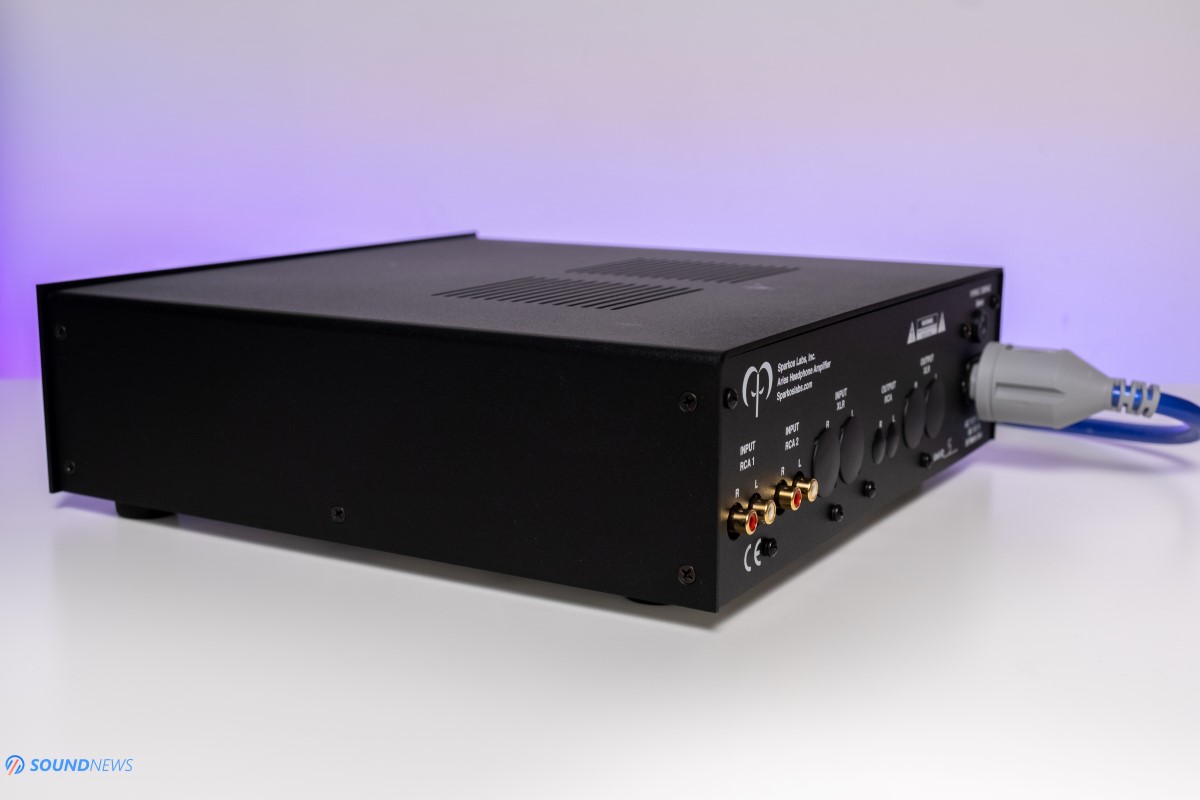
V. Soundstage & Depth
You know, all these chapters I mentioned before are all interconnected. With a see-through transparency and a complete absence of the background noise, you could start defining how big is the stage of a track, how deep the sounds can go, how much distance is between the listener and those artists that are playing in front of you. Focusing on a single part or even on a single note out of a crowded piece is not that hard anymore, I don’t even need to close my eyes for that to happen. I want to point out that Aries will not artificially enhance the size of the stage how few tube-based amplifiers will try to do, instead it will render a life-like depth where I can sense the air mass moving around and then hitting an imaginary wall at some point. As depth, sound-staging capabilities are not enhanced, however I still believe that Aries is having one of the biggest soundstage I encountered in solid-state amplifiers. It’s really wide and expanded on the right music and never up-front or too close to the listener. Erzetich Phobos is a very capable headphone that can show a nice pin point image without artificially enhancing the stage from left to right. With it, I could walk by my tunes, its airy presentation was completely unchanged, it sounded exactly as I remember them on TOTL equipment.
I was concerned just for a moment that the 6.35mm jack might shrink the stage due to an increase of channel crosstalk, but once I volume matched the Aries and the HPA4 using a MiniDSP EARS system, my fears were allayed as Aries sounded as wide, as open and as airy as the HPA4.
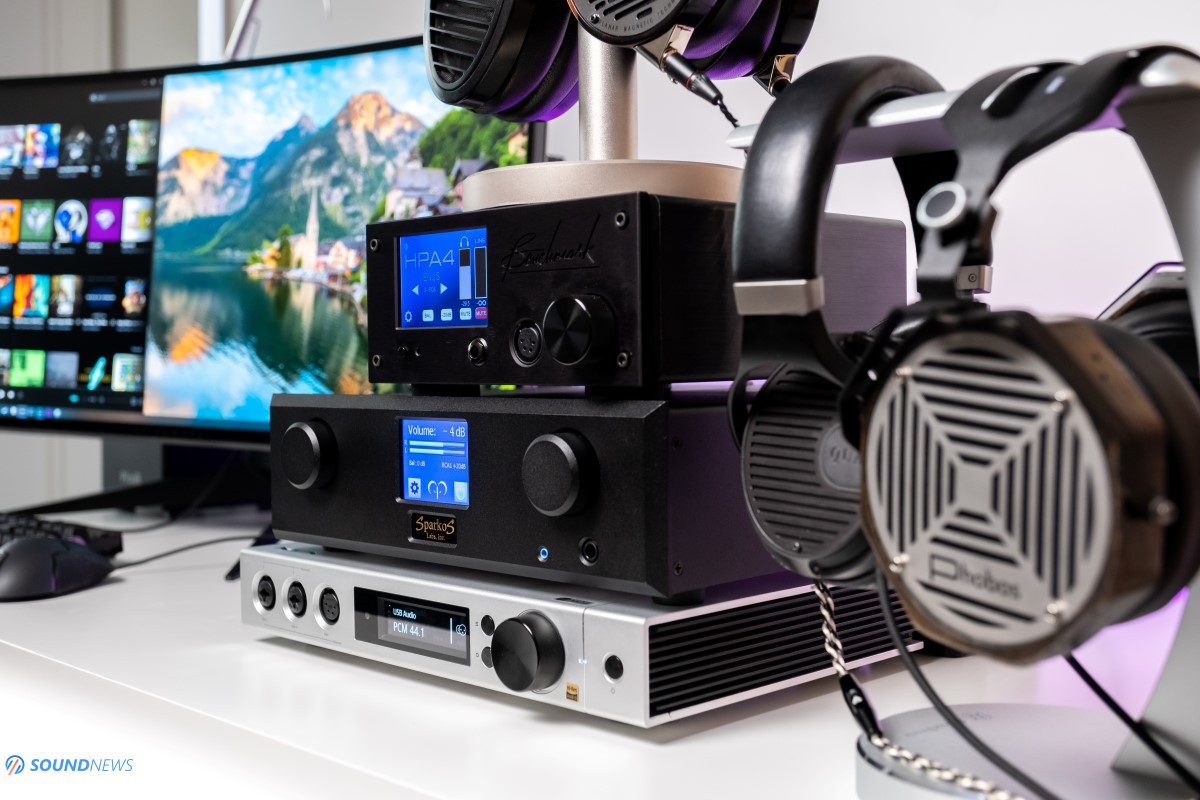
VI. Frequency Response
Sub-bass is going down to the lowest octaves, being incredibly tight and decaying in an instant. It is also incredible layered, especially on electronica music it is like sub-bass is coming in waves, one after one, hitting relentlessly. It is also the cleanest type of bass, that is transparent and really detailed. Bass is under a very strict control, that not a lot of amps can be proud of. Headphone drivers have a really good grip while listening to Aries. I’m into all types of electronica and this is why I do care a lot about the quality and about the quantity of it. In this regard, Aries kept up with the fastest beats, offering an incredible slam and control over the headphone drivers.
Mid-bass is as articulate, as deep, as clean and as controlled as the low-end is. It is also not overdone or emphasized. It is there exactly as much as I would want it to be. Tonal balance is top notch and as a result mid-bass felt like a straight line, infusing just the right amount energy in this region. If you would like a longer decay of the bass, a smoother type of bass that lingers a bit more, then Aries is definitely not for you. Aries is brutally honest; it will be fast or slow depending only on the material that is being played.
Midrange is also linear and straight as a line. At first, I thought it might be dryer with some particular sources, but if it’s not with my Matrix Element X which is extra linear in the midrange and extra crispy up top, then surely Aries can be paired with every source possible. Again, I’m hearing the midrange natural, involving, even smooth with few songs. Since Aries has that effortless presentation, midrange never felt dry sounding, or plain boring sounding, it was always full of substance, meaty and guttural sounding. I did enjoy all my sopranos, symphonic pieces mixed with guitar solos and they all infused warmth and emotions.
Transitioning to the treble area was done without any fanfare, without drops or rises, again it has a super extended and a really neutral type of treble. There isn’t any trace of digital glare, there aren’t small grains in the treble, brightness is nowhere to be found, yet it is extra clean, detailed, really textured, you could almost touch those hi-hats, cymbals, snares and drums. Aries sounds defined and crystal clean even past sub-sonic treble regions. Aries stays true to the source and source material and if there is a hint of coloration in any region of the frequency response, you should blame your music, your source or your headphones.
Simply put, Aries has the widest frequency response, that is easily on the same level with Benchmark HPA4, it’s simple like that.
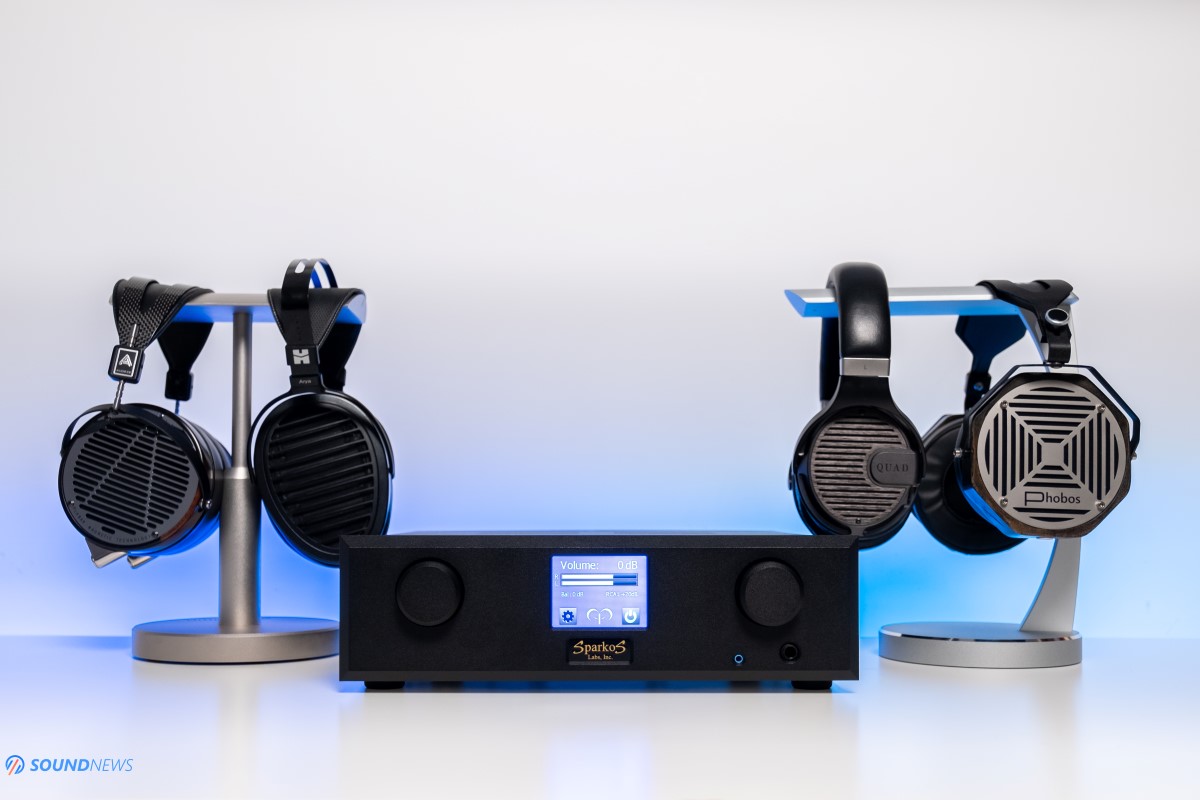
VII. Power Output
From a big collection of headphones, from which 4 are desktop planar-magnetic headphones, Aries was able to drive them all at medium gain (+20 dB). Only with Audeze LCD-4 and with Hifiman Arya I needed to go past 0 dB of volume, up to +3 dB with Arya and up to +5 dB with LCD-4. Max volume is +20 dB so obviously there is a lot of headroom left on tap and it could drive even heavier loads. With all that said, Aries is not the most powerful amplifier I have tested, there are few units that outperformed it in terms of raw power output. Personally, for me, the quality of that power and how clean is that power is a lot more important than the brute force and how loud it could go. From hundreds of hours of listening to Aries and throwing every at it, this is probably the only con I could mention – it’s powerful and it drove all my headphones successfully, yet it was not the most powerful one and it didn’t had the biggest headroom I even encountered. I presume it might pose a problem for the HifiMan HE-6, HE-6SE and Susvara owners, but that is just an educated guess so take my words with a pinch of salt.
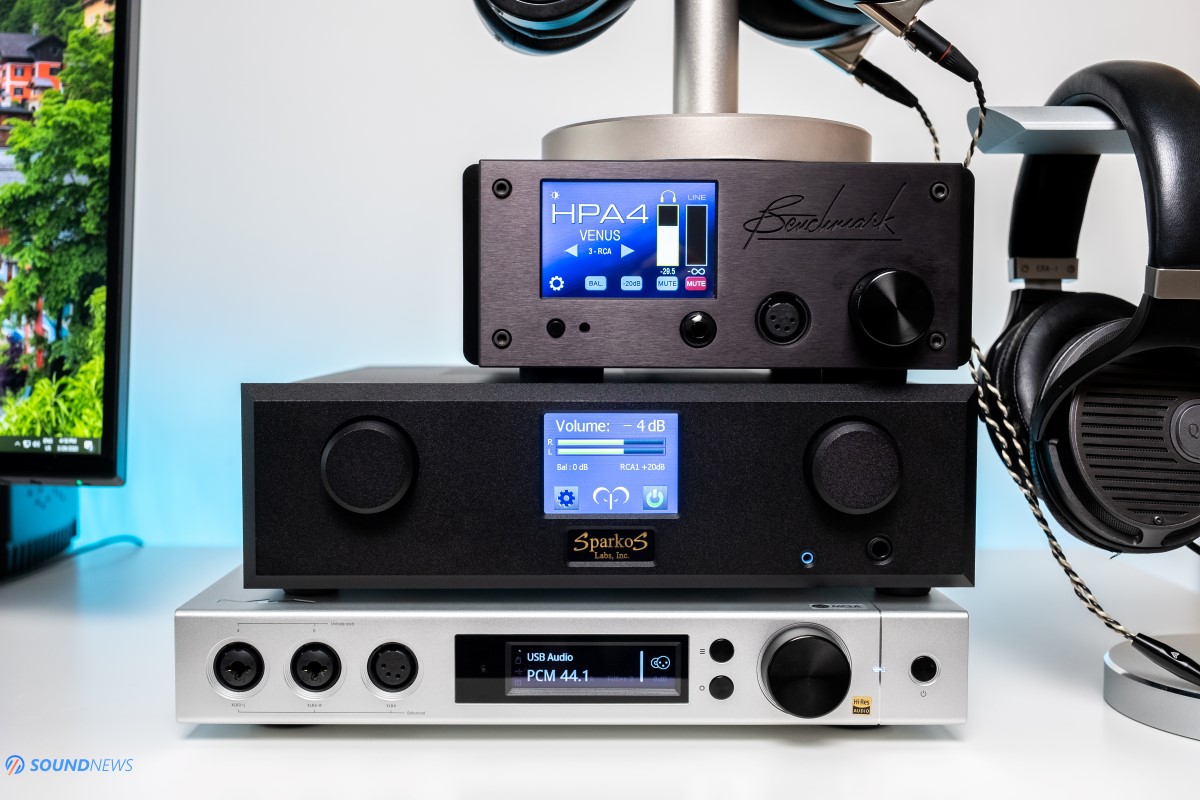
VIII. A Comparison
SparkoS Labs Aries ($2500 Base model / $3000 Full model) VS Benchmark HPA4 ($3000)
In terms of features and functionality, HPA4 goes ahead offering more inputs and outputs on the back and an additional 4-pin XLR output on the front panel. Its main menu controlled by the touch screen is a bit more advanced and there are still more settings to play with. With an additional $100 Benchmark is also offering a metal remote that works exceptionally well in a speaker setup.
They both use really advanced stepped attenuators, HPA4 uses the best THA AAA-888 modules as its main amp stage, while Aries is relying on their best discrete op-amps, HPA4 is using a switching power supply while Aries is using a toroidal transformer regulated by their own voltage regulators.
To make a proper and calculated comparison I needed to volume match both of them. For that I used a MiniDSP E.A.R.S. system and REW 5.1 software. I generated a 300 Hz sine wave and calibrated both at 85 dB of volume with Audeze LCD-4. For 85 dB of volume, Aries volume was set at +3 dB (17 dB of volume left on tap) while on Benchmark the volume was set on -24 dB (39 dB of volume left on tap).
As you can clearly see, HPA4 is already showing clear signs that it is more powerful (39 dB left compared to 17 dB on Aries) and it could probably drive all headphones, including the notorious Hifiman Susvara or HE-6/HE-6SE.
I prepared a lengthy playlist with music of different genres as I wanted to cover absolutely everything from slow and ethereal music to aggressive, speedy and angry music. I used only the Audeze LCD-4 since I calibrated both only with this one, I used the same RCA interconnect cable, the same power cables, the same source, only the amps would be swapped.
I started playing some classical, I was switching the amps only after the song would end, then I moved to some folk music, then to some alternative, then to few electronica tracks, then to rock and then to metal.
Truth to be told, as much as I have tried, and after many tunes and hours of listening tests, I couldn’t spot a clear and defined difference between those two. Sometimes I felt one is closer sounding, sometimes I felt the other one is closer, then one slammed harder, then the other slammed even harder. It was late night so I blamed my tired ears and I took a pause. Next morning after a hot shower and some Audispray for the cleanest ears, I redid my tests. I couldn’t believe my ears, after calibrating the amps, they again sounded identical to me!
At $500 less, you have the same identical sound of Benchmark HPA4 at the cost of a lower output power.
With all that said, remember one thing: Benchmark HPA4 was developed by a vast team of engineers with years and years of experience under their belts. They released years before the HPA1, then HPA2 and HPA4 is basically their third iteration.
On the other hand, Andrew Sparks – the only engineer in his team, was able to create the same type of reference sound, a top-of-the-line headphone amplifier with his own hands. This is still their first boxed product they ever released, the bar was set so high for me that I can only imagine how their second or third product will sound.
I also want to point out that, when you buy a product from a big company like Benchmark, nobody except you is happy about that purchase, but when you buy a product from a two person business, you make 3 people happy, you will be supporting a small company that cares about music, you will be supporting creativity and the development of their future products.
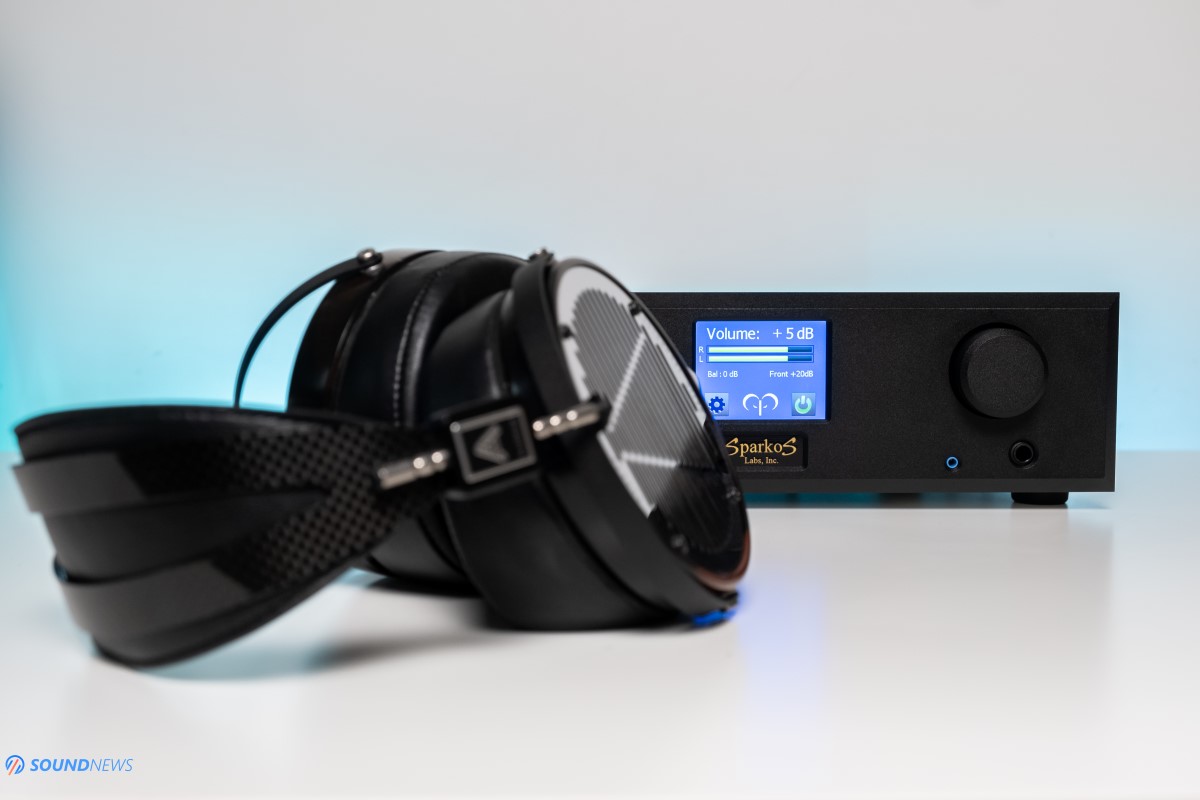
Conclusion
Put it simply this way: Sparkos Labs Aries together with Benchmark HPA4 are still the best headphone amplifiers I ever listened. Aries looks great, I really dig that symmetrical look, that balance control and that OLED touch screen are adding a lot of value to it. I can’t say much about the Full model, but the Base model did wonders for my headphones and reminded that a single bright mind with lots of dedication and work can create an impressive product, with top specs and with an extraordinary sound attached to it.
Aries is not cheap, at $2500 for the base model, or $3000 for the full version, not a lot of folks could afford it, but if you want only the best, Aries sound like audio perfection from DC to dog whistle.
You can get it directly from SparkoS Labs by following this link or you can get it from your local Sparkos Labs distributor.
PROS:
- Great looking device, love the symmetrical look
- Amazing build quality
- Sounds incredibly wide and open for a solid-state amplifier
- Accurate pin-point imaging, precise note placement around the listener
- The most linear frequency response, from the lowest lows to the highest treble Aries played it all
- The highest levels of transparency and resolution I encountered
- Excellent dynamics, excellent slam and punch with the right music and headphones
- Lighting quick transient response
- Lacks any noise and distortion, blackest background even with tiny IEMs
- Great tonal balance, sounding natural and full-bodied all the time
- An immaculate performance on all fronts
CONS:
- It’s powerful, but not Mr. Olympia powerful
- Would love to see a balanced version of it at some point
ASSOCIATED EQUIPMENT:
- DACs: Denafrips Venus, Matrix Audio Element X, Burson Conductor 3 Reference, Flux Lab Acoustics FCN-10
- Headphone Amps: SparkoS Labs Aries, Benchmark HPA4, Flux Lab Acoustics FCN-10, xDuoo TA-30
- Integrated Amps: Hegel H190, Keces E40
- Power Amp: Keces S125
- IEMs: FiiO FH7
- Portable headphones: Sennheiser Momentum 2, Meze 99 Classics
- Full-sized headphones: Audeze LCD-4, Erzetich Phobos, Hifiman Arya, Quad ERA-1
- Loudspeakers: Buchardt S400, KEF LS50W
- Interconnects: QED Reference (x2), Aune AL3
- Speaker cables: Kimber PR8, Audioquest Type4
- Power Cables: Isotek EVO3 Premier (x2)
- Balanced Isolation Power Conditioners: PLiXiR Elite BAC400, KECES BP-600
